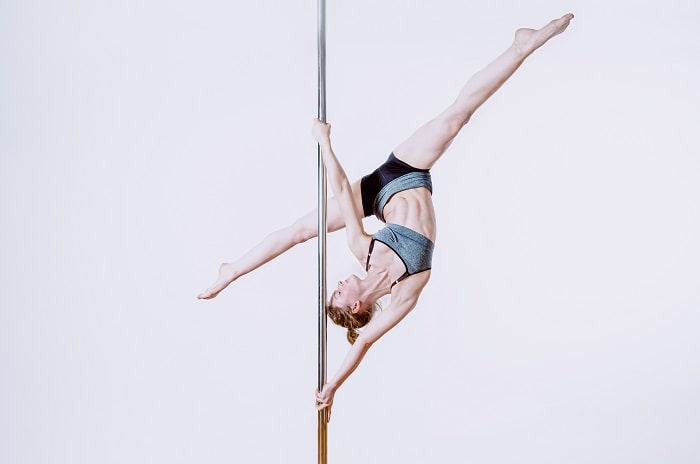Pole dancing has a storied history that spans cultures, continents, and centuries. Its journey from ancient fitness practices and spiritual rituals to modern fitness studios and art performances reflects its diverse cultural roots and evolving purpose. This article uncovers the history of pole dancing, its origins, and the transformations that have shaped it into a celebrated form of art and fitness today.
The Cultural Origins of Pole Dancing
The history of pole dancing is rich and diverse, spanning various cultures throughout time. However, tracing its exact origins proves to be a challenge, as there isn’t a distinct moment in history that marks its beginning. Instead, pole dancing has evolved and taken shape in different ways across different societies, making it a fascinating and multifaceted art form with a rich historical background.
1) Exotic Dances in Africa and Medieval Europe
According to some theories, the roots of pole dancing lie in the dances of various African tribes. It is said that, in some African tribes, the future wife had to dance on a wooden pole by reenacting the act of sexual intercourse for her husband’s pleasure. Another possible origin is from medieval Europe, where the dancers used the wooden pole to attract the opposite sex!
While there are some references to pole-like dances in African tribes and the use of poles for seduction in medieval Europe, it’s challenging to pinpoint them as the definitive origins of modern pole dancing. Due to limited evidence and historical documentation, the historical information surrounding these theories should be approached with some caution.
2) Mallakhamb – The Indian Connection
While the dances mentioned earlier may have had connections to rituals of sexual intercourse and seduction, it’s important to note that pole dancing encompasses a broader range of practices. One such example is Mallakhamb, a traditional Indian dance form where athletes showcase their acrobatic skills using a wide wooden pole with a wooden edge. Originally intended for male athletes, Mallakhamb served as a training method, much like the techniques employed by contemporary pole dancers such as Jenyne Butterfly and Bambi Richardson. The term “Mallakhamb” itself derives from the words “malla,” meaning wrestler, and “khamba,” meaning pole, reflecting its roots in athleticism and physical prowess.
One of the earliest records of pole-based performances traces back to ancient India. Mallakhamb, which translates to “pole gymnastics,” originated over 800 years ago as a training practice for wrestlers. Using a wooden pole, practitioners displayed incredible strength, flexibility, and balance.
- Significance: Unlike modern pole dancing, Mallakhamb emphasized physical fitness and was deeply intertwined with martial arts traditions.
- Legacy: Mallakhamb is still practiced today and is recognized as a national sport in India.
3) Traditional Chinese Pole Performances
One of the prominent traditional performances in China dates back a thousand years. Male athletes would showcase their skills by climbing two 6-meter-high poles. Similar to Mallakhamb, pole climbing demanded tremendous strength and impeccable balance. This ancient practice exemplifies the enduring legacy of pole-related disciplines, emphasizing the physical prowess and dedication required to master these impressive feats.
4) Maypole and Pagan Influences
During the medieval period, pole dancing took on a celebratory form in Europe through the tradition of the Maypole dance. Participants danced around a pole, weaving ribbons as a symbol of fertility and community. While different in execution from today’s pole dance, these traditions emphasized rhythm, celebration, and movement.
5) Pole Dancing in the Circus Tent
Amid the Great Depression in the 1920s USA, pole dancing found its place within circuses, captivating audiences with sensual choreographies. Female dancers gracefully moved and performed on the poles that supported the circus stage. As time went on, these unique performances gained immense popularity, eventually becoming the cornerstone of the Burlesque and cabaret scene in the 1950s. Since then, pole dancing has been synonymous with sensual dancing and striptease. Dive deeper into the captivating evolution of pole dancing, tracing its path from the circus tent to its modern expression in our article, “The Evolution of Pole Dancing: From Circus Sensuality to Modern Expression ” Discover how this art form has transformed and evolved over the years, captivating hearts and minds along the way.
Modern pole dance history
1980: During the 1980s, pole dancing began to evolve and incorporate elements of striptease and sensual dance, particularly in Canada and the USA. This evolution contributed to the popularity of pole dancing as a form of entertainment and fitness. However, it’s important to note that the specific details and timeline of this development may vary, and pole dancing’s history is still a subject of ongoing research and interpretation.
1994: Fawnia Mondey, a dancer in Canada, played a significant role in the development of pole dancing as it is known today. In 1994, after being hired as a dancer in Exotic Dance, Fawnia Mondey began focusing on combining sensual dance moves with athletic and sportive elements in pole dancing. Her efforts helped popularize this fusion and played a part in shaping the modern form of pole dancing. Fawnia Mondey is considered a pioneer in the field and has made substantial contributions to the art and sport of pole dancing. She was the first to present the first DVD about learning the art of Pole Dancing.
The Evolution of Pole Fitness
In addition to the mentioned developments, there have been several advancements and developments in the sport of pole dancing over the years. Some of these include:
- Professional Competitions: Pole dancing has evolved into a competitive sport with numerous international and national competitions. These competitions showcase the skills, strength, and creativity of pole dancers from around the world, helping to elevate the sport’s profile and establish it as a recognized discipline.
- Pole Dancing Fitness Classes: The fitness aspect of pole dancing has gained significant popularity. Many fitness studios now offer pole dancing classes as a fun and effective workout, attracting individuals of all fitness levels. These classes focus on building strength, flexibility, and coordination while incorporating dance and acrobatic elements.
- Pole Dance Studios and Schools: The establishment of dedicated pole dance studios and schools have provided a structured and supportive environment for enthusiasts to learn and develop their skills. These establishments offer a range of classes, workshops, and training programs tailored to different levels, from beginners to advanced practitioners.
- Emphasis on Technique and Safety: With the growth of pole dancing as a sport, there has been a greater emphasis on proper technique and safety. Training programs and certifications are available for instructors to ensure they have the necessary knowledge to teach safely and effectively. Safety equipment, such as crash mats and grip aids, are also commonly used to reduce the risk of injuries during training and performances. Safety is crucial in pole dancing, especially when performing advanced moves. Make sure you’re practicing with the best equipment. At Vertical Wise Shop, we offer high-quality crash mats that provide the protection you need. Use code ‘CRASH10’ at checkout for a 10% discount!

Exclusive Offer: Enjoy a 10% discount on crash mats for our valued readers. Use code ‘CRASH10’ at checkout to claim your savings. Click on the image to buy
- Artistic Expression and Choreography: Pole dancing has expanded beyond its sensual origins and now incorporates various styles of dance and artistic expression. Dancers are pushing boundaries with innovative choreography, blending different dance genres, and incorporating storytelling and emotions into their performances.
- Inclusion in Fitness and Dance Communities: Pole dancing has gained recognition and acceptance within the wider fitness and dance communities. It is now considered a legitimate form of exercise and artistic expression, leading to collaborations, workshops, and cross-disciplinary events that bridge the gap between pole dancing and other dance styles.
These developments have contributed to the growth and evolution of pole dancing as both a sport and an art form, further establishing its credibility and expanding its reach to a broader audience.
Cultural Impact and Misconceptions
Despite its growing acceptance, pole dancing continues to challenge societal perceptions. Once stigmatized due to its associations with exotic dance, it is now recognized for its artistry and athleticism. Movies, TV shows, and social media influencers have further normalized and celebrated pole dancing.
Who Invented Pole Dancing?
While no single person can claim credit for “inventing” pole dancing, its modern form is the result of centuries of cultural evolution. From Mallakhamb to burlesque, every era and culture has contributed to the rich tapestry that pole dancing represents today.
Conclusion: A Journey of Strength, Art, and Expression
The history of pole dancing is a testament to human creativity, resilience, and adaptability. From ancient rituals to cutting-edge athleticism, pole dancing continues to break boundaries and redefine itself. As we celebrate its past, we look forward to seeing how it evolves in the future.
Common Questions About Pole Dancing History
To address key search queries, here are answers to frequently asked questions about the history of pole dancing:
1. What is the history of pole dancing?
The history of pole dancing spans ancient fitness traditions like Mallakhamb, cultural dances in Africa and Europe, and modern developments in circus performances and exotic dance clubs. Over time, it has evolved into an athletic and artistic discipline practiced globally.
2. When was pole dancing invented?
Pole dancing has no single inventor. Its origins can be traced to various cultures and practices, such as Mallakhamb in India (over 800 years ago) and Chinese pole acrobatics.
3. Who invented pole dancing?
Modern pole dancing evolved from a mix of influences, including circus acts, burlesque performances, and fitness trends. No single person is credited with its invention.
4. How did pole dancing evolve?
Pole dancing transitioned from traditional rituals and fitness practices to an art form popular in exotic dance clubs during the mid-20th century. Today, it is celebrated as a sport and a form of self-expression.
References: -Elizabeth Lyden. “Pole Dancing is a Sport Not a Strip Club Striptease.” Policymic.com. September 2011. Web. 14 April 2013. -http://mic.com/articles/15253/pole-dancing-is-a-sport-not-a-strip-club-striptease -https://graecomuse.wordpress.com -http://diaryofawrinkle.com -http://rednights.blogspot.gr/2007/05/blog-post_04.html -http://www.historicalharmonies.org/mapypoledanceorigins.htm -http://www.academia.edu/6402111/In_Society_Mallakhamb_An_Investigation_into_the_Indian_Physical_Practice_of_Rope_and_Pole_Mallakhamb -http://www.chinaculture.org -Girl Show:Into the Canvas World of Bump and Grind” written by A.W. Stencell.








